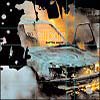 Here is another electronic, beat-based album that plays the game of "Ilove it/I hate it." The atmosphere is mostly dark, the beats thick andchugging, and the melodies somehow buried inside walls of static noiseand time-warped samples. There's the first problem: sometimes themelodies never get a chance to come out and play. As a result, I'm leftlistening to a somewhat boring, somewhat repetitive drum track thatdoesn't have the power to carry the song by itself. Unfortunately, thealbum is produced in such a way that each song inevitably has someincredible sounds on it but they're completely attenuated by the waythey're thrown into the backgroud and lost beneath a plethora ofeffects. But then, amazingly, all that wishy-washy noise comes togetherfor a few brief moments and gives birth to an explosion that comesclose to relieving the tension and weariness of the first few minutesof the song. This is how "Flesh Wound" opens up the album and it seguesinto the infinitely more entertaining "Gargantuan." I imagine one ofthose dolls that has a slinky for a neck bopping around to this rubberyand dynamic wall of beats only to have a stick of dynamite send it intothe great beyond. "Gargantuan" has nearly the same production style as"Flesh Wound," but manages to pull it off by allowing the repeatingdrum and melody patterns to weave a bit more intricate and diverse bodyof sound. "Boiled In Blood" is a bit more low-key than anything else onthe album and it provides a nice break from the havoc of the first twotracks. It unfortunately gives way to more standard four-on-the-floordance music that sounds horribly distorted and only covers up whatseems to be the most interesting elements dying in the background. Andso this process continues throughout the duration of Don't Be Scared.I either love it or I hate it. Not much changes in terms of production:it's all pretty muddy and eventually this makes the entire album feelfar too homogenous. The formula either works for some of the songs orit doesn't. This up and down experience ends up making the whole albumfeel dull; it's just hard to sit down and listen to the whole thing allthe way through.
Here is another electronic, beat-based album that plays the game of "Ilove it/I hate it." The atmosphere is mostly dark, the beats thick andchugging, and the melodies somehow buried inside walls of static noiseand time-warped samples. There's the first problem: sometimes themelodies never get a chance to come out and play. As a result, I'm leftlistening to a somewhat boring, somewhat repetitive drum track thatdoesn't have the power to carry the song by itself. Unfortunately, thealbum is produced in such a way that each song inevitably has someincredible sounds on it but they're completely attenuated by the waythey're thrown into the backgroud and lost beneath a plethora ofeffects. But then, amazingly, all that wishy-washy noise comes togetherfor a few brief moments and gives birth to an explosion that comesclose to relieving the tension and weariness of the first few minutesof the song. This is how "Flesh Wound" opens up the album and it seguesinto the infinitely more entertaining "Gargantuan." I imagine one ofthose dolls that has a slinky for a neck bopping around to this rubberyand dynamic wall of beats only to have a stick of dynamite send it intothe great beyond. "Gargantuan" has nearly the same production style as"Flesh Wound," but manages to pull it off by allowing the repeatingdrum and melody patterns to weave a bit more intricate and diverse bodyof sound. "Boiled In Blood" is a bit more low-key than anything else onthe album and it provides a nice break from the havoc of the first twotracks. It unfortunately gives way to more standard four-on-the-floordance music that sounds horribly distorted and only covers up whatseems to be the most interesting elements dying in the background. Andso this process continues throughout the duration of Don't Be Scared.I either love it or I hate it. Not much changes in terms of production:it's all pretty muddy and eventually this makes the entire album feelfar too homogenous. The formula either works for some of the songs orit doesn't. This up and down experience ends up making the whole albumfeel dull; it's just hard to sit down and listen to the whole thing allthe way through.samples:



 The air is thick, muggy, and full of nervous chatter. The congregationfinds their seats with the help of ushers dressed in black suits,polite in their assistance and insistence that the growing crowd findtheir seats. The tent is makeshift at best, made from old bed sheetsand a few cracks in the seams are visible to those who look above. Noone is sure what to expect. They've heard the tales of this newminister and his new gospel, but they are apprehensive, perhaps even alittle frightened at the prospect. Then, suddenly, the lights dim, andthe stage explodes with horns, guitar, bass, and heavy percussion. Asthe lights restore the minister sings, no, howlsthe sermon with a boogie that is just shy of satanic, and thecongregation can't help but rise to their feet and join in with theminimal choir that accompanies him. Casey Meehan is that minister, andhis songs aren't the old or new testament, but they are lessons for theweak nonetheless. He sings of being baptised, of being born again, andwith titles like "Who Will Be Saved?" and "Do Right" his mission isclear. He may not be of a formal religion, but he is here to shepherdthe meek through the valley, and he will do so with a bit of Dixie, abit of Storyville, New Orleans, and a lot of moxy and sensual vocalprowess reminiscent of Mark Sandman and Greg Dulli. These songs are thelessons of a man who has been through it all, who sees the masks we allput on and who wants to shatter them, hurling a reality with the forceof a fastball; and like any good evangelist he has sinned as much asthose he tries to save. His band, the Delta Still, are a tight, fierceensemble, and the songs are punishing in places and delicate in others:whatever it takes to get the message out right. The instrumentals aremassive, and through it all Meehan carries the weight with ease, sexingthe microphone for all its worth. For his first record, Meehan isshooting out of the gate, heading down the track at full speed. Catchhim if you can.
The air is thick, muggy, and full of nervous chatter. The congregationfinds their seats with the help of ushers dressed in black suits,polite in their assistance and insistence that the growing crowd findtheir seats. The tent is makeshift at best, made from old bed sheetsand a few cracks in the seams are visible to those who look above. Noone is sure what to expect. They've heard the tales of this newminister and his new gospel, but they are apprehensive, perhaps even alittle frightened at the prospect. Then, suddenly, the lights dim, andthe stage explodes with horns, guitar, bass, and heavy percussion. Asthe lights restore the minister sings, no, howlsthe sermon with a boogie that is just shy of satanic, and thecongregation can't help but rise to their feet and join in with theminimal choir that accompanies him. Casey Meehan is that minister, andhis songs aren't the old or new testament, but they are lessons for theweak nonetheless. He sings of being baptised, of being born again, andwith titles like "Who Will Be Saved?" and "Do Right" his mission isclear. He may not be of a formal religion, but he is here to shepherdthe meek through the valley, and he will do so with a bit of Dixie, abit of Storyville, New Orleans, and a lot of moxy and sensual vocalprowess reminiscent of Mark Sandman and Greg Dulli. These songs are thelessons of a man who has been through it all, who sees the masks we allput on and who wants to shatter them, hurling a reality with the forceof a fastball; and like any good evangelist he has sinned as much asthose he tries to save. His band, the Delta Still, are a tight, fierceensemble, and the songs are punishing in places and delicate in others:whatever it takes to get the message out right. The instrumentals aremassive, and through it all Meehan carries the weight with ease, sexingthe microphone for all its worth. For his first record, Meehan isshooting out of the gate, heading down the track at full speed. Catchhim if you can.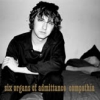 Ben Chasny, aka Six Organs of Admittance, has been crafting his brand of acoustic rock for the past five years, winning some over with his psychedelic ruminations and earthy tones. For his latest release, the pop song structure is on full display, as Chasny keeps it short and sweet for the most part, and lays on the space rock undertone with a very thin brush. As always, Chasny plays pretty much everything himself, with Ethan Miller adding the most influential contributions. There seems to be a more Indian influence on these songs than there ever was before, from the opening track to the sitar on "Somewhere Between," though Chasny's guitar work is everywhere and as impressive as always. Six Organs' infamous lack of production values are also on every track, with the whole album possessing a muted, dirty, and quirky quality, where tempos speed up and slow down here and there, and sounds swell in and out. Chasny's multi-tracked vocals have a spooky effect, like a ghost choir with little to live for, and as each track progresses, he takes greater chances and reaches to new highs and lows with his voice. Altogether this means it's more of the same from Chasny for the most part, with nothing really shocking or new to speak of. That's not necessarily a bad thing, as the songs are among the best he's written, including the "reworked and finalized" version of "Somewhere Between;" but it still leaves me with that overwhelming feeling of "What if he...?" Someday, maybe Six Organs will branch out into new territory. Until then, there's still a lot to appreciate, as acoustic psychedelia doesn't get much better than this.
Ben Chasny, aka Six Organs of Admittance, has been crafting his brand of acoustic rock for the past five years, winning some over with his psychedelic ruminations and earthy tones. For his latest release, the pop song structure is on full display, as Chasny keeps it short and sweet for the most part, and lays on the space rock undertone with a very thin brush. As always, Chasny plays pretty much everything himself, with Ethan Miller adding the most influential contributions. There seems to be a more Indian influence on these songs than there ever was before, from the opening track to the sitar on "Somewhere Between," though Chasny's guitar work is everywhere and as impressive as always. Six Organs' infamous lack of production values are also on every track, with the whole album possessing a muted, dirty, and quirky quality, where tempos speed up and slow down here and there, and sounds swell in and out. Chasny's multi-tracked vocals have a spooky effect, like a ghost choir with little to live for, and as each track progresses, he takes greater chances and reaches to new highs and lows with his voice. Altogether this means it's more of the same from Chasny for the most part, with nothing really shocking or new to speak of. That's not necessarily a bad thing, as the songs are among the best he's written, including the "reworked and finalized" version of "Somewhere Between;" but it still leaves me with that overwhelming feeling of "What if he...?" Someday, maybe Six Organs will branch out into new territory. Until then, there's still a lot to appreciate, as acoustic psychedelia doesn't get much better than this. 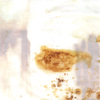 Jim Haynes is a San Francisco-based musician who has made a name for himself through work in the duo Coelacanth and in his travels as a solo sound-artist. The rich SF scene has no doubt provided Haynes with many opportunities to expand his listener-ship, and recently he has ventured eastward with an installation called Magnetic North appearing in Nashville and San Jose. This disc, the first release from The Helen Scarsdale Agency and limited to 300 copies, contains the audio portion of the installation, culled from performances of the last two years. The most striking quality of the music herein can inadequately be described as its organic nature.
Jim Haynes is a San Francisco-based musician who has made a name for himself through work in the duo Coelacanth and in his travels as a solo sound-artist. The rich SF scene has no doubt provided Haynes with many opportunities to expand his listener-ship, and recently he has ventured eastward with an installation called Magnetic North appearing in Nashville and San Jose. This disc, the first release from The Helen Scarsdale Agency and limited to 300 copies, contains the audio portion of the installation, culled from performances of the last two years. The most striking quality of the music herein can inadequately be described as its organic nature.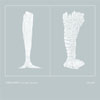 23five came into the public eye as the label vehicle for soundartist-types, peddling the kind of stuff I'd see in the MoMA gift shopand pass by thinking it just wouldn't be the same outside an austeregallery space. Now only 6 releases into stride, the label has proved mewrong several times over. One needs only to hear Furudate &Zbigniew's World As Will II to see why. The opening minutes ofCoelacanth's sophomore release, however, left me with second, or ratherthird, thoughts. The Glass Sponge begins with a sparse scraping,thumping, and clanging that seems on the brink the ever-arty black holeof inaccessibility. After a few minutes, droning bell tones andtempered feedback ease their way in, making the piece more substantialbefore, as quickly as it began, the music fades into silence. Thoseopening bits were merely a prelude to the real meat of track, a sort ofsecond act comprised of layered static and an enriched texture oflulling feedback and prolonged bell tones. Stuttering vocal utteringsrise from drone and static layers that sound truly oceanic. Song titleslike "The Leaden Sea" and "The Violet Shell and Its Raft" lend a marinetheme to The Glass Sponge that feels apt in relation to the music. (Thename Coelacanth, also, refers to a prehistoric fish recently discoveredto still exist). All four tracks exhibit an approach to drone musicthat is both texturally rich and emotionally resonant. Tracks rangefrom gentle, inviting trips across static that gurgles and glimmerslike actual liquid to eerie passages where hollow drones and squealingfeedback rise from the depths. The Glass Sponge is host to a multitudeof bizarre, untraceable sounds as well. Various throbbings, tinkerings,and knockings find comfortable home in Coelacanth's sound world, givenoverture in the album's first moments, making it increasingly hard tobelieve that any of this was gathered from public performance as thenotes describe. This is beautiful, thoroughly engaging, and uniquemusic, no doubt more appropriate headphone music for pretending yourbed is a liferaft than for strolling the museum floor.
23five came into the public eye as the label vehicle for soundartist-types, peddling the kind of stuff I'd see in the MoMA gift shopand pass by thinking it just wouldn't be the same outside an austeregallery space. Now only 6 releases into stride, the label has proved mewrong several times over. One needs only to hear Furudate &Zbigniew's World As Will II to see why. The opening minutes ofCoelacanth's sophomore release, however, left me with second, or ratherthird, thoughts. The Glass Sponge begins with a sparse scraping,thumping, and clanging that seems on the brink the ever-arty black holeof inaccessibility. After a few minutes, droning bell tones andtempered feedback ease their way in, making the piece more substantialbefore, as quickly as it began, the music fades into silence. Thoseopening bits were merely a prelude to the real meat of track, a sort ofsecond act comprised of layered static and an enriched texture oflulling feedback and prolonged bell tones. Stuttering vocal utteringsrise from drone and static layers that sound truly oceanic. Song titleslike "The Leaden Sea" and "The Violet Shell and Its Raft" lend a marinetheme to The Glass Sponge that feels apt in relation to the music. (Thename Coelacanth, also, refers to a prehistoric fish recently discoveredto still exist). All four tracks exhibit an approach to drone musicthat is both texturally rich and emotionally resonant. Tracks rangefrom gentle, inviting trips across static that gurgles and glimmerslike actual liquid to eerie passages where hollow drones and squealingfeedback rise from the depths. The Glass Sponge is host to a multitudeof bizarre, untraceable sounds as well. Various throbbings, tinkerings,and knockings find comfortable home in Coelacanth's sound world, givenoverture in the album's first moments, making it increasingly hard tobelieve that any of this was gathered from public performance as thenotes describe. This is beautiful, thoroughly engaging, and uniquemusic, no doubt more appropriate headphone music for pretending yourbed is a liferaft than for strolling the museum floor. 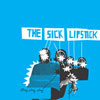 It's not as easy as it seems to be noisy. There's more to it than justyelling and banging on an instrument. It takes some real premeditationand skill to be able to pull together a rush of ear-piercing sound intosomething that is abrasive while still inspiring curiosity in thelistener to delve into the depth of the sound. The Sick Lipstick findthemselves on the right side of the line between trash and treasure,dropping an album that is assaulting in its style and modus operandibut is more likely to make the listener flail about with recklessabandon than hide under the bed. Lead vocalist Lindsay Gillard poutsand struts throughout, hurling deliciously shrill invectives ofnonsensical, stream-of-conscious lyrics into the band's swirl of noiseand atonality. She sounds like the spoiled girl who didn't get her wayfor once and unleashes a level of anger and psychological torture wellbeyond her years. She's got a knack for turning a phrase and catchingthe attention with lyrics like "I want / to have / your baby! / So youhave / to come / inside me!" from "Pretend I'm Sleeping," delivered inher elementary schoolgirl tone. Even when the song's subject matterisn't explicitly nasty or violent, Dillard's phrasing and tone are verypointed, and at time disturbing like the macabre, playground taunts ofa budding sociopath who just won't stop knocking the other kids aroundduring an otherwise pleasant game of kickball. Musically, The SickLipstick slug it out with razorblade guitar licks that jerk and squealrecklessly. These licks often skid out of control into waves of whitenoise that undulate wildly, creating a harsh auditory burnout. Backedwith a chunky, fuzzy keyboard they create a remarkably consistent soundfor a band whose aesthetic is so rooted in chaotic intensity. Thepercussion maintains a pleasant bi-polarity, at once both relentlesslynoisy and eagerly danceable. "Mommy's at the Grocery Store" benefitsfrom a modulating riff that repeats rhythmically with the backbeat andmakes it a positively brutal earworm, and the cascading, declarativechorus of "Zombie Cookie" seems destined to be some kind of alternatereality cheerleading cheer. "Thigh Master, I'm Yr Master" is thesurrealist-feminist rant that Kathleen Hanna wishes she wrote, jumpingfrom image to image in a jittery pounce. While their sound isinteresting and decidedly catchy, they rarely emerge from theboundaries established in the first few songs. Their tightness andcontrol keeps them from losing shape. Gillard never outright screams ina wordless fury, and the accompaniment never explodes into thefree-rock explosion that the building tension on Sting, Sting, Stingseems to foreshadow. That might be a difficult goal for the band toreach however, since every song on the album already kicks off at fullpower and never lets up. While the fervor this conveys is exhilaratingand exciting, a foray into more noticeable dynamics and counterpointsmight make those peaks even higher. In spite of these unfulfilleddesires, what The Sick Lipstick does present us with is a screechingbanshee punk rock record with provocative personality and loads of darkfun.
It's not as easy as it seems to be noisy. There's more to it than justyelling and banging on an instrument. It takes some real premeditationand skill to be able to pull together a rush of ear-piercing sound intosomething that is abrasive while still inspiring curiosity in thelistener to delve into the depth of the sound. The Sick Lipstick findthemselves on the right side of the line between trash and treasure,dropping an album that is assaulting in its style and modus operandibut is more likely to make the listener flail about with recklessabandon than hide under the bed. Lead vocalist Lindsay Gillard poutsand struts throughout, hurling deliciously shrill invectives ofnonsensical, stream-of-conscious lyrics into the band's swirl of noiseand atonality. She sounds like the spoiled girl who didn't get her wayfor once and unleashes a level of anger and psychological torture wellbeyond her years. She's got a knack for turning a phrase and catchingthe attention with lyrics like "I want / to have / your baby! / So youhave / to come / inside me!" from "Pretend I'm Sleeping," delivered inher elementary schoolgirl tone. Even when the song's subject matterisn't explicitly nasty or violent, Dillard's phrasing and tone are verypointed, and at time disturbing like the macabre, playground taunts ofa budding sociopath who just won't stop knocking the other kids aroundduring an otherwise pleasant game of kickball. Musically, The SickLipstick slug it out with razorblade guitar licks that jerk and squealrecklessly. These licks often skid out of control into waves of whitenoise that undulate wildly, creating a harsh auditory burnout. Backedwith a chunky, fuzzy keyboard they create a remarkably consistent soundfor a band whose aesthetic is so rooted in chaotic intensity. Thepercussion maintains a pleasant bi-polarity, at once both relentlesslynoisy and eagerly danceable. "Mommy's at the Grocery Store" benefitsfrom a modulating riff that repeats rhythmically with the backbeat andmakes it a positively brutal earworm, and the cascading, declarativechorus of "Zombie Cookie" seems destined to be some kind of alternatereality cheerleading cheer. "Thigh Master, I'm Yr Master" is thesurrealist-feminist rant that Kathleen Hanna wishes she wrote, jumpingfrom image to image in a jittery pounce. While their sound isinteresting and decidedly catchy, they rarely emerge from theboundaries established in the first few songs. Their tightness andcontrol keeps them from losing shape. Gillard never outright screams ina wordless fury, and the accompaniment never explodes into thefree-rock explosion that the building tension on Sting, Sting, Stingseems to foreshadow. That might be a difficult goal for the band toreach however, since every song on the album already kicks off at fullpower and never lets up. While the fervor this conveys is exhilaratingand exciting, a foray into more noticeable dynamics and counterpointsmight make those peaks even higher. In spite of these unfulfilleddesires, what The Sick Lipstick does present us with is a screechingbanshee punk rock record with provocative personality and loads of darkfun.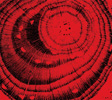
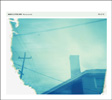

 As enjoyable as Robert Haigh's albums have been, they never seemed to capture that same aching beauty of his classic albums from the '80s (both under his own name and as Sema). This latest album changes all that. The delicate touch and fragile melodies, which defined his best work, are both present. Sombre without being dour, reflective without being depressing, this represents Haigh's finest work in years.
As enjoyable as Robert Haigh's albums have been, they never seemed to capture that same aching beauty of his classic albums from the '80s (both under his own name and as Sema). This latest album changes all that. The delicate touch and fragile melodies, which defined his best work, are both present. Sombre without being dour, reflective without being depressing, this represents Haigh's finest work in years.
